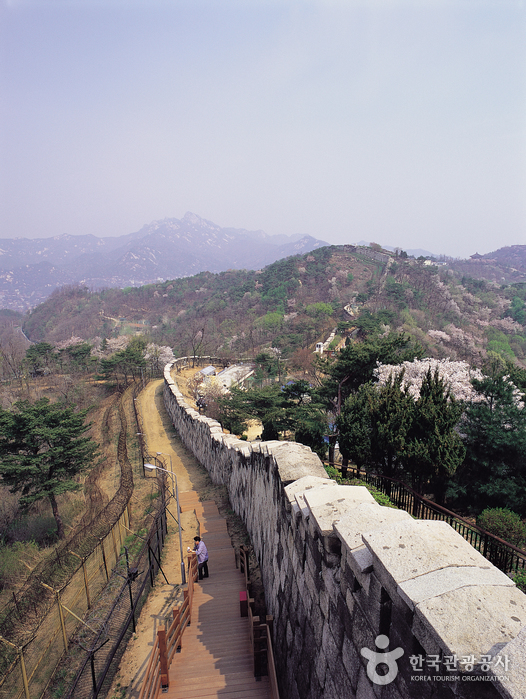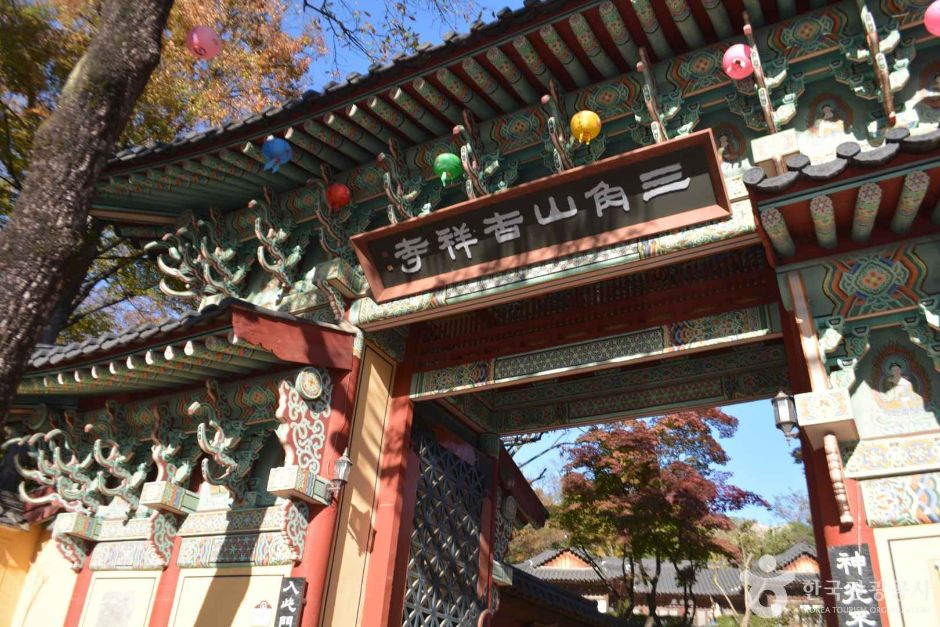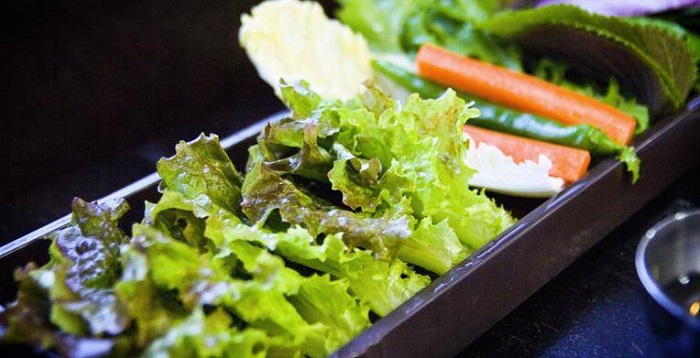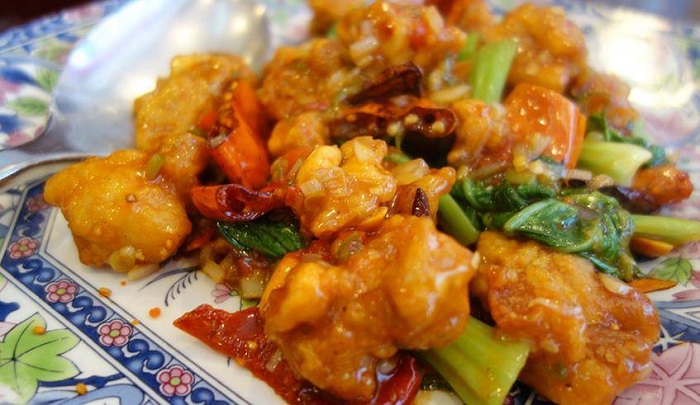Monte Bugaksan (북악산)
18.3Km 2025-08-21
Cheongun-dong, Jongno-gu, Seúl
Seúl está rodeada de montañas, principalmente Bugaksan, Namsan, Naksan e Inwangsan. Bugaksan, la montaña situada al norte de Seúl, es la mayor de estas, y es un vástago del monte Bukhansan. También es conocida como Baekaksan.
La Fortaleza de Seúl recorre la sierra y la puerta Changuimun (también llamada Jahamun), una de las cuatro pequeñas puertas que rodeaban el castillo durante la época Joseon, se encuentra al oeste de la montaña, cerca de Inwangsan. La ruta Bugak Skyway, que une Changuimun y Arirang Hill en Jeongneung, tiene unas magníficas vistas del centro de Seúl, y pasa por diversas atracciones como Changuimun y el Pabellón Bukak. Otra atracción es el Parque Samcheong, al sur del monte Bugaksan.
Los montes Inwangsan (al oeste de Bugaksan) y Naksan (al este) tenían ubicaciones perfectas según la geomancia coreana pungsu (feng-shui). El monte Inwangsan estaba plagado de tigres durante los comienzos de la dinastía Joseon. De acuerdo con la leyenda, el rey suplicó a la deidad de la montaña que enviara los tigres al otro lado del río Yalu. Aunque los tigres se marcharon, se le permitió quedarse a una tigresa con cachorros, cuyas crías se multiplicaron convirtiendo Inwangsan en un lugar temible lleno de tigres.
Inwang Skyway conecta la parte este de Insangwan con Bugaksan. La ladera este de Inwangsan se ha convertido en una elegante zona residencial, mientras que Guksadang (que significa literalmente "Santuario Nacional") fue desplazado de Namsan a un área al oeste de la montaña en la década de 1920. Aún hoy, se celebran exorcismos chamanes en el santuario, así como rituales en honor de las deidades de la montaña.
Arboreto Yulgok (율곡수목원)
18.3Km 2023-01-26
Jangseungbaegi-ro 392, Papyeong-myeon, Paju-si, Gyeonggi-do
Templo Gilsangsa en Seúl (길상사(서울))
18.3Km 2025-04-02
Seonjam-ro 5-gil 68, Seongbuk-gu, Seúl
El templo Gilsangsa está situado en el distrito de Seongbuk-dong, del norte de Seúl. Fue construido en el recinto del famoso restaurante Daewongak, cuya dueña donó la propiedad al venerable monje Bupjeong (1932-2010), que fue la persona que transformó el lugar en este templo inaugurado en 1997. Aunque Gilsangsa tiene una historia relativamente corta, está muy bien situado en el centro de Seúl, por lo que atrae muchos visitantes tanto nacionales como extranjeros. El templo también sirve como lugar cultural, ya que ofrece diversos programas como enseñanzas budistas, y estancia en templo. Las construcciones Gilsang Seonwon (centro zen) y la Casa el Silencio están dedicadas a la meditación. Gilsang Seonwon ofrece habitaciones para que mediten budistas con experiencias, mientras que la Casa del Silencio está abierta al público en general. Gilsangsa también tiene una sede en París.
Daebak Ssambap duruchigi (대박쌈밥두루치기)
18.4Km 2021-03-27
7, Eungam-ro 9-gil, Eunpyeong-gu, Seoul
+82-2-303-3090
It is a place where you can enjoy fresh Ssam vegetables and various cuts of beef and pork. This restaurant's signature menu is leaf wraps and meat set menu. This Korean dishes restaurant is located in Eunpyeong-gu, Seoul.
Tumba Real Jeongneung en Seúl (서울 정릉) [Patrimonio Cultural de la Humanidad de la Unesco]
18.4Km 2021-01-27
Arirang-ro 19-gil 116, Seongbuk-gu, Seúl.
+82-2-914-5133
La tumba Jeongneung es la tumba real de la reina Sindeogwanghu, que era la esposa de Taejo, el primer rey de la dinastía Joseon. En aquella época el rey, según las tradiciones del antiguo reino Goryeo, tenía dos esposas: una en Seúl, que llega a ser la reina Sindeogwanghu, y otra en su tierra natal. La Sra. Han, su esposa en su tierra natal, murió antes de que Taejo subiera al trono, por lo que fue la Sra. Kang quien tuvo el honor de ser coronada como reina.
Taejo tuvo dos hijos con la reina, pero aquellos príncipes murieron durante la revolución liderada por su hermanastro Lee Bang-won. Después de esta tragedia, Taejo perdió el interés por la política y dedicó la mayoría de su tiempo a orar por su esposa e hijos en los templos budistas situados en Jeongneung.
Dariwon (다리원)
18.4Km 2021-03-27
135, Jeungsanseo-gil, Eunpyeong-gu, Seoul
+82-2-376-0604
The nurungji soup served on the iron plate is famous. The best menu at this restaurant is sizzling rice soup with seafood. This Korean dishes restaurant is located in Eunpyeong-gu, Seoul.
Festival del Amanecer del Monte Inwangsan en Jongno-gu (종로구 인왕산 해맞이 축제)
18.4Km 2024-12-31
Cheongun-dong, Jongno-gu, Seúl.
02-2148-5002
** El festival ha sido cancelado. **
Biblioteca Literaria Cheongun (청운문학도서관)
18.5Km 2023-08-17
Jahamun-ro 36-gil 40, Jongno-gu, Seúl
Muralla Hanyang Doseong de Seúl (Tour de Sellos)
18.5Km 2025-04-07
Changuimun-ro 42, Jongno-gu, Seúl




![Tumba Real Jeongneung en Seúl (서울 정릉) [Patrimonio Cultural de la Humanidad de la Unesco]](http://tong.visitkorea.or.kr/cms/resource/91/2622291_image2_1.jpg)


 Español
Español
 한국어
한국어 English
English 日本語
日本語 中文(简体)
中文(简体) Deutsch
Deutsch Français
Français Русский
Русский